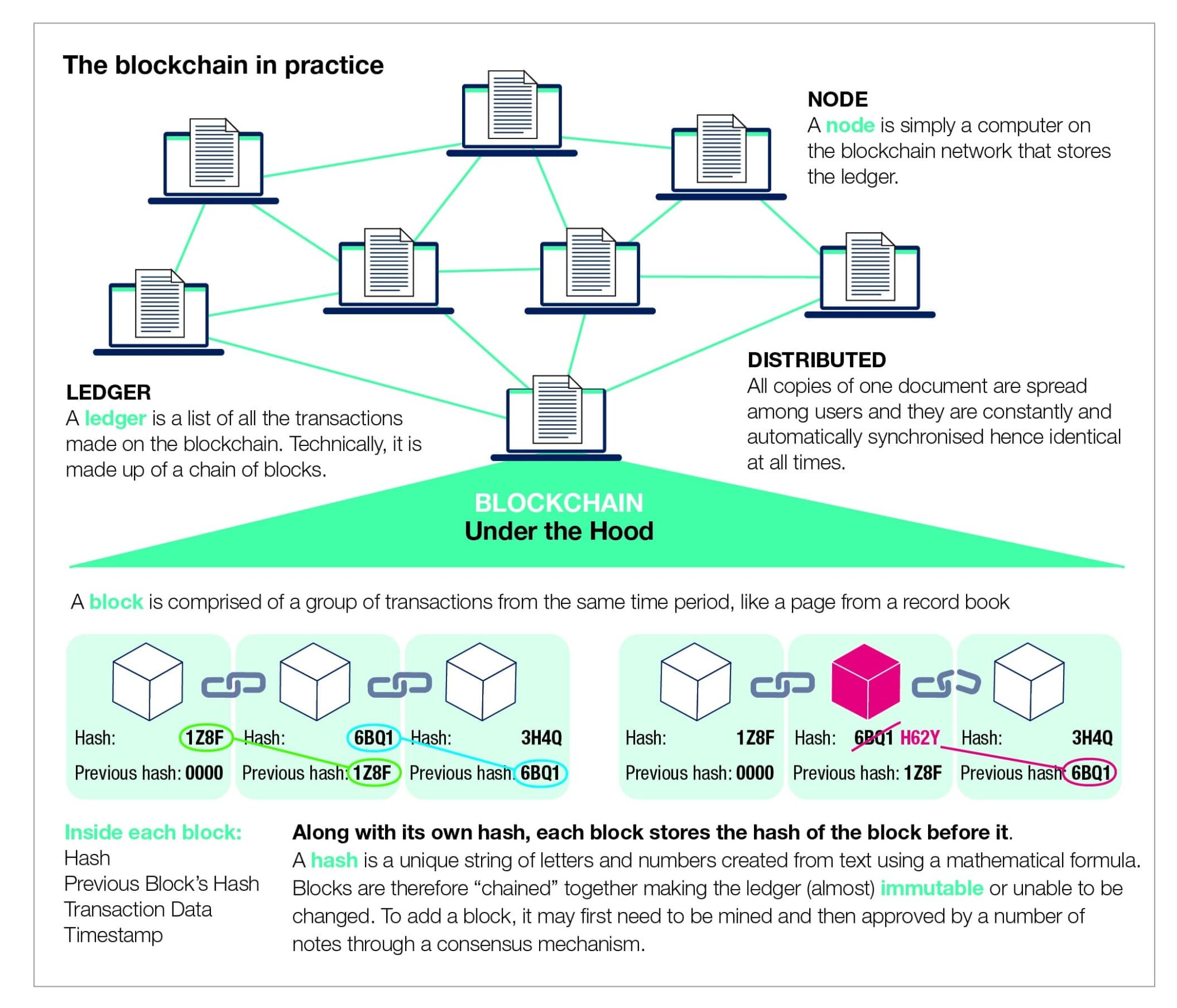How the OECD is exploring the potential for blockchain, and other technologies, to improve the efficiency and security of certification systems.
In a previous issue, European Seed explored various applications of blockchain in the agriculture and food sector. This new technology has been incorporated in various aspects of the seed sector and is on its way to become a mainstream feature touching upon several facets of the seed world. European Seed sat down with Caroline Malcolm, Head of the Organisation for Economic Cooperation and Development’s (OECD) Global Blockchain Policy Centre and Csaba Gaspar, Program Manager of the OECD’s Seed Schemes to get their take on such digital technologies and their use in the agricultural and seed sectors.
European Seed (ES): Why are the OECD Seed Schemes exploring digital technologies now?
Csaba Gaspar (CG): The OECD Seed Schemes have been exploring ways to improve the efficiency and integrity of their certification and labelling system since 2013. This exploration was driven at first by a need for more reliable labelling and certification options to support the increasing volume of seed lots being traded internationally and a heightened risk of fraud in the seed sector. In addition, the Schemes wanted to improve data collection and provide governments and other supply chain stakeholders with more accurate and up-to-date information on the production, certification, and international trade of seed.
In 2017, the OECD launched its “Going digital” initiative, which is designed to bring about stronger and more inclusive growth from the digital revolution [footnote 1].

OECD’s broader work led the Seed Schemes to start exploring the potential for digital technologies to address some of their own challenges. Digital data management technologies have the potential to enhance transparency of transactions and traceability of goods. The timely availability and exchange of data with multiple stakeholders would also enable the rapid identification and reporting of problems (such as fake labels) within the supply chain, offering National Designated Authorities (NDAs) the opportunity to better uphold the integrity of the Schemes.
The spread of COVID-19 has raised awareness of the ability for digital technologies to improve the resilience of agricultural supply chains during emergency situations, from the issuance of digital certificates to online training for inspectors. The pandemic also demonstrated the ability of supply chains and the actors who operate within them to quickly and efficiently adapt to new challenges and systems.
[tweetshareinline tweet=”COVID-19 has raised awareness of the ability for digital technologies to improve the resilience of agricultural supply chains during emergency situations.” username=”bf0bb2e954fc86abade4306f627a7a29″]
A number of countries have already digitalised their national certification systems. These initiatives provide opportunities to build on this capacity to develop an international network, but also present new challenges in terms of the interoperability of existing systems. When the Schemes first started exploring digital solutions for certification, blockchain technologies stood out because of their potential to improve efficiency, decentralize the storage of transaction information, provide greater transparency and traceability, and help build trust. The OECD Seed Schemes began working closely with OECD’s Blockchain Policy Centre to better understand the opportunities and challenges the technology presents [footnote 2].
Over the coming months the OECD Seed Schemes Secretariat will begin a feasibility study to explore the technologies available for the digitalization of the OECD Seed Schemes. The study will compare the costs and benefits of different IT systems, including the development of a use case for a blockchain solution.
ES: What is a blockchain technology?

Caroline Malcolm (CM): A blockchain is a type of ledger of transactions or record of information, shared between parties in a network. You can think of a ledger like a record book: it records and stores information about all transactions between users in chronological order. What makes a blockchain unique is that the same ledger can be held by lots of different people simultaneously (i.e. there does not need to be one central record-keeping authority), and that the record on the blockchain is almost completely immutable, i.e. unable to be changed, which makes it a highly trusted source.
It’s important to remember that there are many different types of blockchains, but also that blockchains are just one type of distributed ledger technology. It is the most well-known because a blockchain is the basis of Bitcoin which was the first application of distributed ledger technology.
While there are a number of variable features of blockchains, two of the most important are
- The “openness” of the platform (public or private) – Public blockchains are open for anyone to read and view, while private blockchains can only be viewed by a chosen group of people.
- The authority or permission to carry out certain activities (permissioned or permissionless) – Permissioned blockchains permit just a select group of users to write (i.e. generate transactions for the ledger to record) and commit (i.e. verify new blocks for addition to the chain). In contrast, permissionless blockchains allow anyone to contribute and add data to the ledger.
ES: How can blockchains be used in the agricultural and seed sectors and what are the benefits?
CG: Blockchains hold numerous possibilities in the agricultural sector, from digitizing agricultural land registries to improving supply chain traceability.
Complex agricultural value chains are often characterised by information asymmetry. Blockchains can enable secure and efficient data exchange between multiple stakeholders and improve access to information. Not only could this help to address concerns regarding competition but improve processes and transactions, helping farmers to sell commodities at fair prices and lowering fees.
In the agri-food sector particularly, blockchains can add ‘value’ to the end-product by giving consumers information about how their food has been produced and processed. A number of well-known agri-food businesses, such as Walmart, Nestlé and Unilever have already started to introduce blockchain technologies in their supply chains to improve traceability.
Blockchain technology has received particular attention for its potential to support quality control and safety, in particular identifying the source of errors in supply chains. Recently, the OECD explored the potential for blockchain technologies to address fraud in pesticide supply chains [footnote 3]. Global trade in illegal pesticides has been steadily growing in recent years, posing serious threats to agriculture, the environment, human health, and the economy. By providing supply chain actors, both public and private, with greater visibility over supply chains and almost real time information over transactions, the use of blockchains can also limit opportunities for fraud and illegal practices.
[tweetshareinline tweet=”By providing greater visibility over supply chains and almost real time information over transactions, the use of blockchains can also limit opportunities for fraud and illegal practices.” username=”bf0bb2e954fc86abade4306f627a7a29″]
The use of smart contracts in combination with blockchain technology can support the automation of organisational activities, replacing old and burdensome processes to deliver greater efficiency. Agricultural insurance built on the blockchain could allow key weather incidents to be directly related to pay-outs via smart contracts [footnote 4]. These could be linked to mobile wallets with weather data being provided regularly by sensors in the field and correlated by data from proximity weather stations. This would facilitate immediate pay-outs in the case of a drought or flooding in the field.
A number of organizations and companies in the seed sector have established pilot projects and initiatives to better understand how blockchain technologies can support their activities and objectives. For example, the Canadian Seed Growers Association is using a private/permissioned blockchain to monitor and trace the life cycle of soybeans through an identity preserved program. The system will provide a story from plant breeding Institution to end consumer and tap into growing consumer demand for food transparency while building additional value into certified seed. HarvestPlus, part of the CGIAR global research consortium, is exploring the feasibility and desirability of applying blockchain technology to a biofortification value chain—in this case, for vitamin A-biofortified orange maize in Nigeria.
ES: What, if any, are the potential challenges?
CG: It is important to recognise that blockchain technology is only one piece of a digitalisation “puzzle” that complements other technologies, such as tools that facilitate the tokenisation of physical products (e.g. QR codes) or AI technology that is used in smart contracts [footnote 5]. It is not a solution on its own.
Given the global nature of agricultural value chains, ensuring that all supply chain actors are involved and aligned is also likely to be difficult. Blockchain is a tool for securely and efficiently sharing information between stakeholders but it does not in itself verify that the information written and committed to the blockchain is accurate. Therefore, Blockchain technologies require a network of trusted stakeholders and an institutional framework of harmonised rules that ensures the input of high-quality data into the ledger.
The high investment costs required to set up and maintain such a system can restrict the adoption of digital solutions, especially in times of economic recession or in countries where financial resources are already constrained.
An enabling policy and regulatory environment for information sharing and cross border data flows is critical. As many countries may have already started developing some form of digital system for the collection and storage of information on seed certification, the integration and interoperability of these systems also presents a challenge.
ES: What is the OECD doing to stimulate the use of blockchain technologies?
CM: The OECD established the Global Blockchain Policy Centre in 2018. The Centre serves as an international reference point for policy makers and supports the co-ordination of OECD work on blockchain and other distributed ledger technologies.
The OECD conducts research on the best practices and policy implications of distributed ledger technology, primarily in financial markets, supply chain, and the public sector, as well as on general aspects of DLT that remain relevant across applications. These aspects include smart contracts and blockchain-based digital identity. In addition to the Organization’s growing body of work in the blockchain space, the OECD provides high-level guidance to governments on the usage of distributed ledger technologies. The OECD strives remain technology neutral in its policy recommendations. Our goal is not to promote blockchain, but to help governments create a policy environment that both encourages blockchain innovation and experimentation while mitigating the potential risks.
[tweetshareinline tweet=”OECD’s goal is not to promote blockchain, but to help governments create a policy environment that encourages blockchain innovation while mitigating the potential risks.” username=”bf0bb2e954fc86abade4306f627a7a29″]
A great source of information on blockchain technology is OECD’s Annual Blockchain Policy forum [footnote 6]. Last year saw panels on blockchains potential in agricultural supply chains and the role of blockchain in supporting international cooperation and technical assistance [footnote 7].
ES: How can blockchain enhance economic development and what would be the benefits for farmers/ consumers?
CM: As a relatively nascent technology, blockchains constitute a new frontier in technological innovation with the potential to create new economic opportunities. There are a number of areas where the application of the technology offers economic benefits including improved efficiency and productivity.
As blockchain technology is a tool to support traceability and transparency, it can play an important role in providing consumers with assurance that the products they are purchasing have been produced safely and sustainably. For farmers, it can help secure demand by providing greater visibility over their activities and support the more equitable distribution of value along the value chain.
Distributed ledger technology can further encourage economic development by expanding business opportunities for small and medium enterprises (SMEs). For example, blockchains can facilitate new methods of SME financing, specifically by democratising access to funds outside of venture capital and other traditional financing mechanisms.
Blockchain also has the potential to increase the participation levels of SMEs in international trade by lowering barriers to entry, providing access to trade finance and facilitating trade transactions. By introducing trust and efficiency in the lending process, blockchain can enable SMEs to obtain credit outside of traditional trade financing instruments like letters of credit issued by major banks, which are often costly, complex, and pose a heavy administrative burden. Blockchain-based trade finance platforms can therefore create opportunities to export or expand into new markets that were previously inaccessible for SMEs.
Footnote 1: http://www.oecd.org/going-digital/
Footnote 2: https://www.oecd.org/finance/OECD-Blockchain-Primer.pdf
Footnote 4: Smart Contracts are self-executing programs recorded on the blockchain that enable automation.
Footnote 5: Tokenisation is the process of taking an item, whether it is a seed lot, an image or some information, and turning it in to a non-sensitive piece of data. This token has no meaning or exploitable value in itself but serves as a reference to the original item.
Footnote 6: This year’s Forum will take place on the 16-20 November 2020. Registration is now open https://www.oecd.org/finance/oecd-blockchain-policy-forum.htm .
Footnote 7: Video recordings of the session can be found here: https://oecd.streamakaci.com/blockchain2019/













